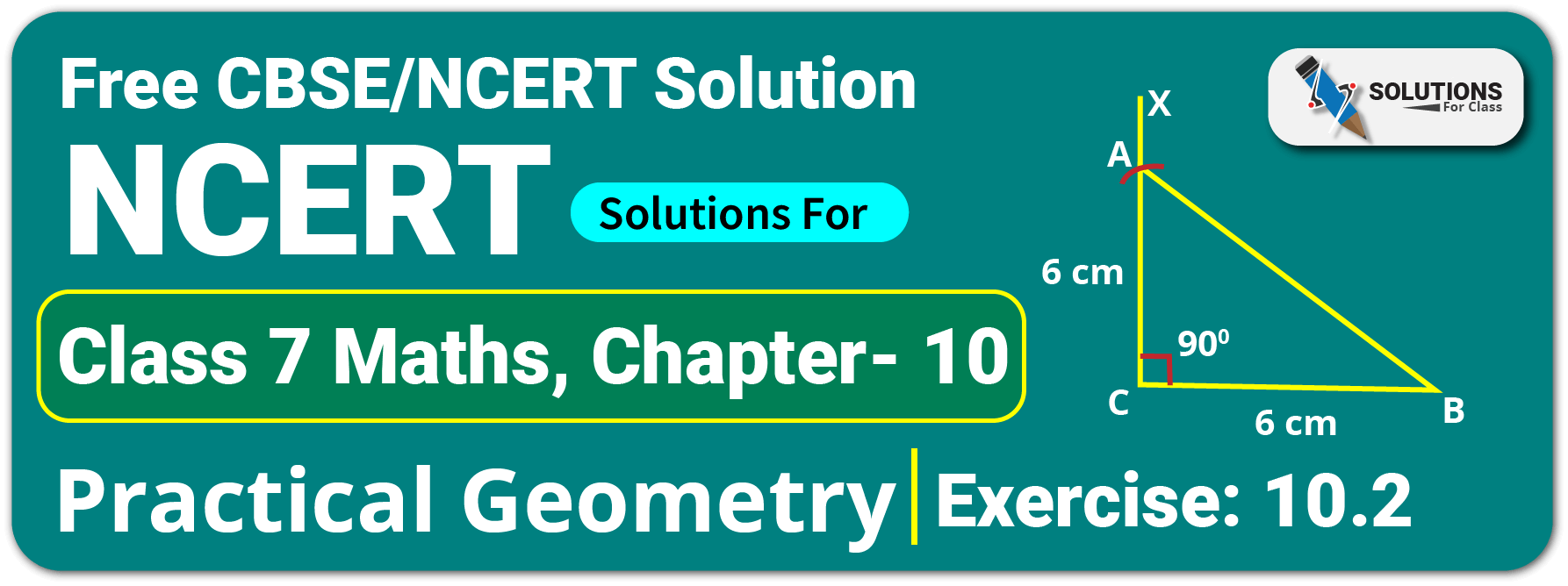
Table of Contents
ToggleClass 7, Maths, Chapter 10, Exercise 10.2 Solutions
Q.1. Construct ∆XYZ in which XY = 4.5 cm, YZ = 5 cm and ZX = 6 cm.
Ans: Steps of construction:
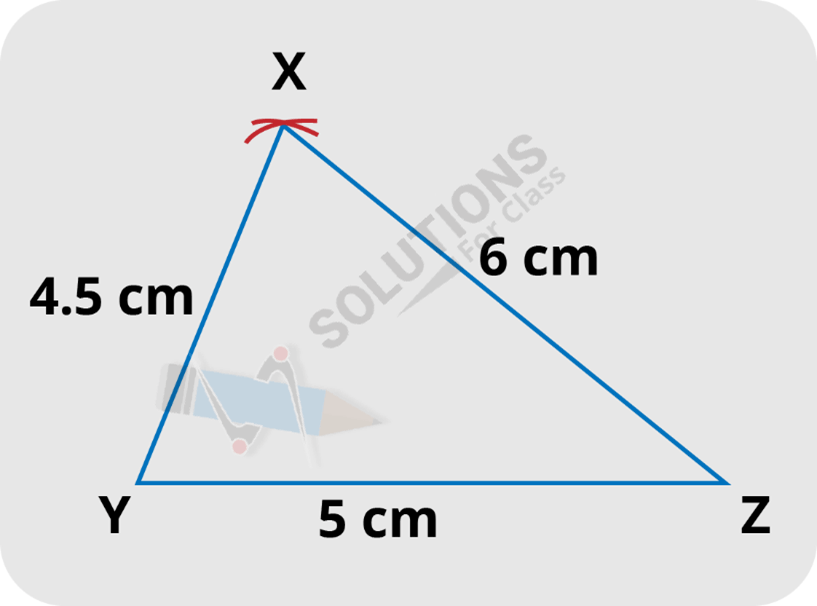
- Draw a line segment YZ = 5 cm.
- Taking Z as a centre and radius 6 cm, draw an arc.
- With Y as a centre and radius 4.5 cm, draw another arc, which intersect the previous arc at X.
- Join XY and XZ.
Then, ΔXYZ is the required triangle.
Q.2. Construct an equilateral triangle of side 5.5 cm.
Ans: Steps of construction:
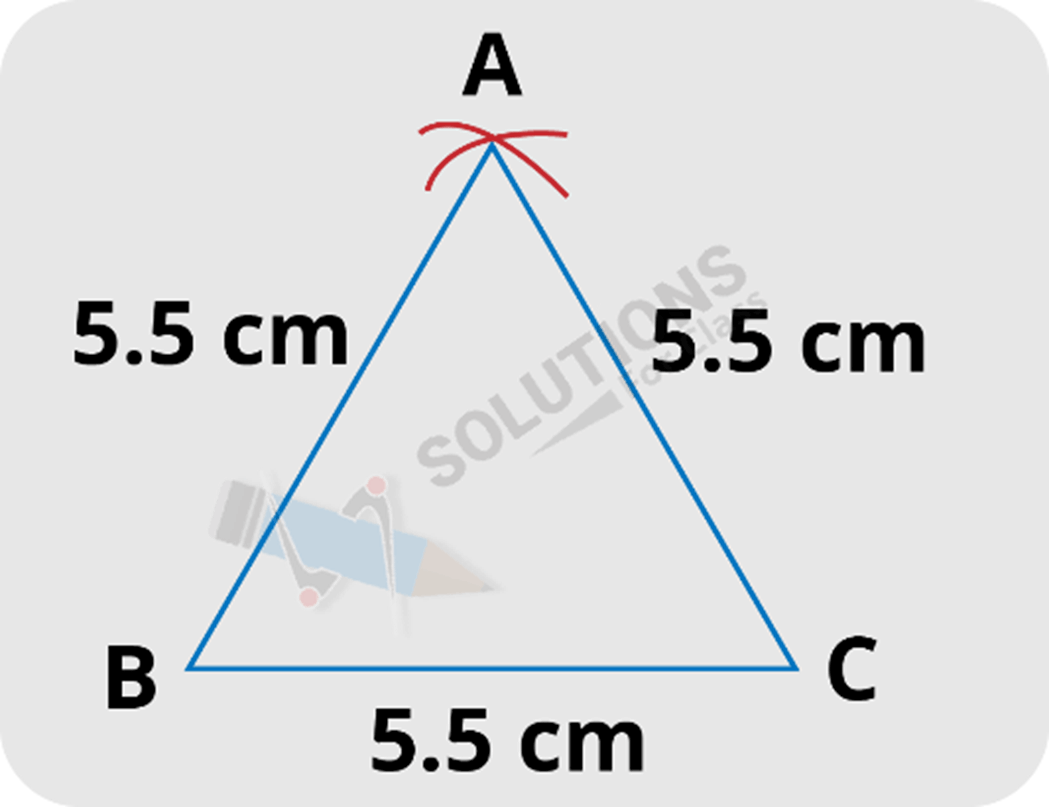
- Draw a line segment BC = 5.5 cm.
- With B as a centre and radius 5.5 cm, draw an arc.
- With C as a centre and radius 5.5 cm, draw another arc, which intersect the previous arc at A.
- Join AB and AC.
Then, ΔABC is the required equilateral triangle.
Q.3. Draw ∆PQR with PQ = 4 cm, QR = 3.5 cm and PR = 4 cm. What type of triangle is this?
Ans:
Steps of construction:
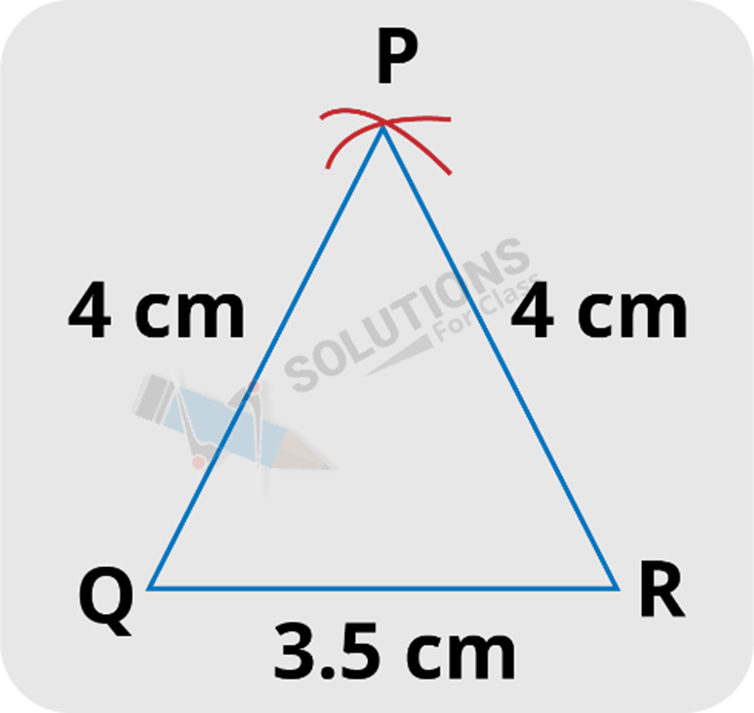
(a) Draw a line segment QR = 3.5 cm.
(b) Taking Q as centre and radius 4 cm, draw an arc.
(c) Similarly, taking R as centre and radius 4 cm, draw an another arc which intersects first arc at P.
(d) Join PQ and PR.
Then, ΔPQR is the required isosceles triangle.
Q.4. Construct ∆ABC such that AB = 2.5 cm, BC = 6 cm and AC = 6.5 cm. Measure ∠B.
Ans: Steps of construction:
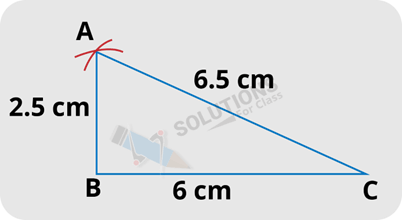
(a) Draw a line segment BC = 6 cm.
(b) Taking B as centre and radius 2.5 cm, draw an arc.
(c) Similarly, taking C as centre and radius 6.5 cm, draw another arc which intersects first arc at point A.
(d) Join AB and AC. Then, ΔABC is the required triangle.
(e) we will measure angle B with the help of protractor. It is equal to ∠B = 90o.
NCERT Solutions For Class 7 Maths, Chapter 10, Practical Geometry (All Exercises)
Class 7, Maths, Chapter 9, Practical Geometry
Class 7, Maths, Chapter 9, Practical Geometry, Exercise 10.1
Class 7, Maths, Chapter 9, Practical Geometry, Exercise 10.2 ← You are here
Class 7, Maths, Chapter 9, Practical Geometry, Exercise 10.3
Class 7, Maths, Chapter 9, Practical Geometry, Exercise 10.4
Class 7, Maths, Chapter 9, Practical Geometry, Exercise 10.5

